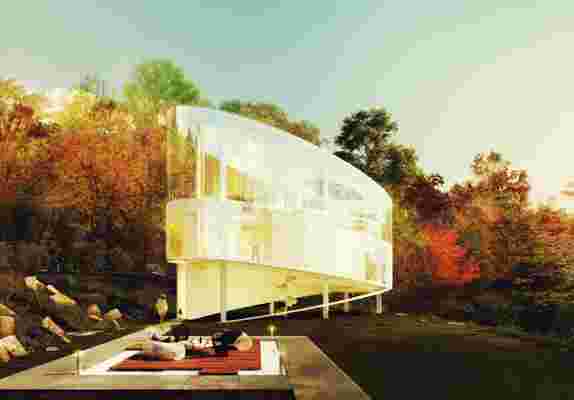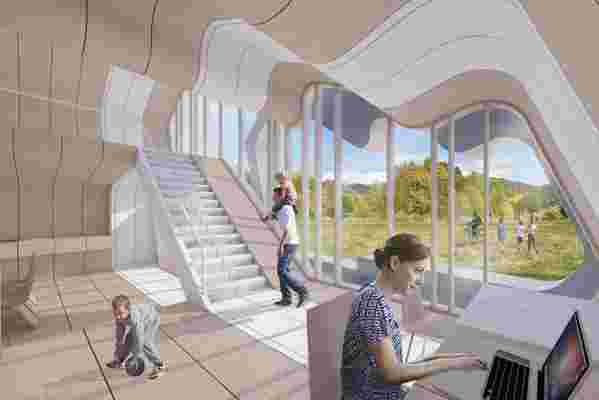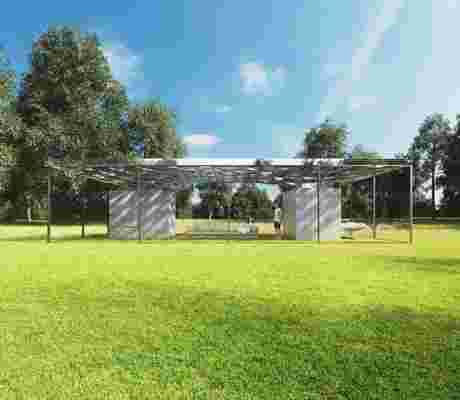Over the past century or so, personal real estate footprints seem to have been cleaved into three prevailing categories: the office (where work gets done), the home (positioned, one hopes, within reasonable striking distance of the office), and the weekend home (to get away from the numbing back-and-forth between home and office). But with digital technology such as it now is, this triangulation seems all too out of date. With greater segments of the workforce now operating independently, and with more people working from home, the congestion along corridors between home and office seems wasteful of both time and resource. And, as anyone who has ventured a Sunday evening commute from the Hamptons to Manhattan knows all too well, the commute between home and weekend home can make the very idea of a getaway seem not worth the effort.

House of Endless Landscapes by Atelier Alter (China).
In an effort to find alternatives to this model, architects Christoph Hesse and Neeraj Bhatia curated “Ways of Life,” an exhibition of 20 different house designs meant to collapse the gulfs between home, office, and weekend home, and to provide viable ways of living outside the city. The resulting projects, each commissioned anew for this exhibition, are on view at Documenta 14 , an international art fair in Kassel , Germany.

Segments by Jürgen Mayer H. (Germany).
With contributions from the likes of Pezo von Ellrichshausen, Tatiana Bilbao, Anna Heringer, and J. Mayer H. (and from Hesse and Bhatia’s own studios), each design provides a different approach to the same challenge: how to live and work amid nature. As Hesse says, in a conversation with AD, “cities have become so expensive that people wonder if it’s worth it. I think it’s attractive for people to live in this other way, in nature.”

Living Garden House by KWK Promes (Poland).
Hesse’s own project, Open House, is divided between three levels, arrayed in such a way as to feel different elements of the forest, from the soil to the canopy. “It’s important to have a close relationship with nature—the atmosphere, the smell, the wind—and that’s why the house is so open,” he explains.
The Open House by Christoph Hesse Architekts (Germany).
Hesse expects “Ways of Life” to have a life beyond the exhibition itself. He is in talks with a real estate developer to build a nature-based community in central Germany, and these designs will become what he calls a “menu” for potential clients.
Walden by Stinessen Arkitektur (Norway).
The premise of decamping from cities to live and work in nature seems to have viable traction. Felipe Correa, a professor at Harvard Graduate School of Design and a principal at Somatic Collaborative, explains the logic behind his team’s submission, Perched House, which he calls a 21st century Winter Garden: “Today, the idea of a ‘summer home’ is changing to become more of an all-seasons home. You no longer really need proximity to an urban center to live and work, so this project has been an opportunity to redefine the weekend or summer home.”
